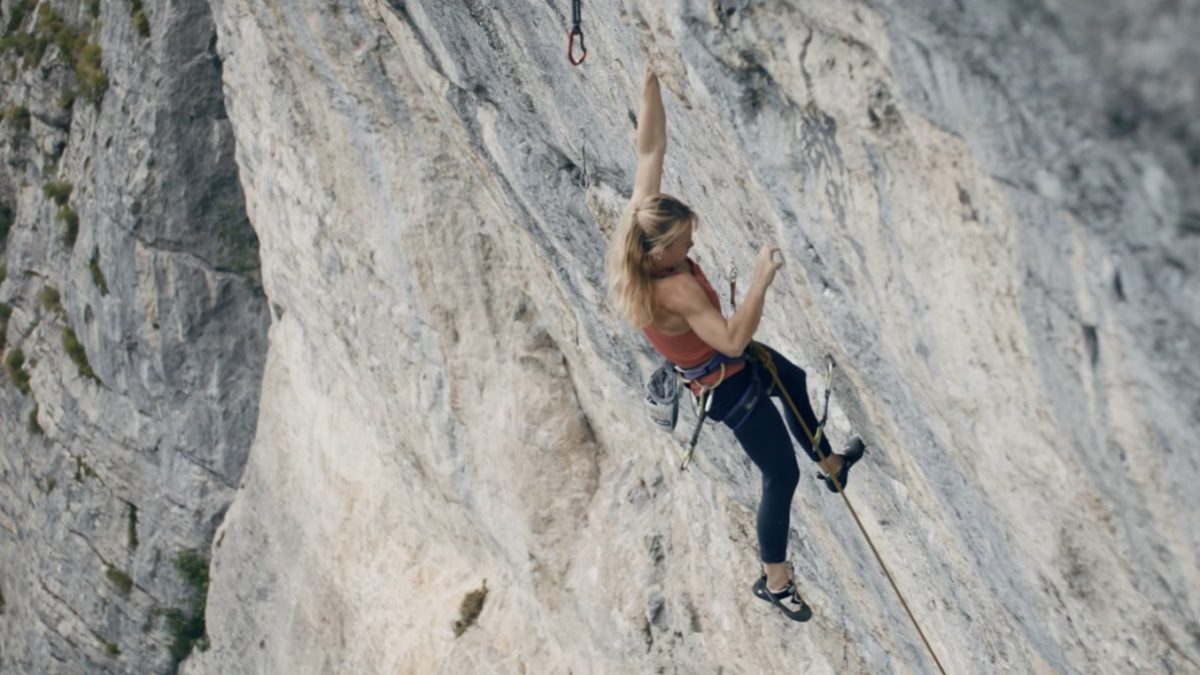Redpoint, Pinkpoint, and Headpoint – What Do They Mean?
In this two-part series, we break down what defines an onsight, flash, redpoint, pinkpoint, and headpoint

This two-part series explains the different types of sends in route climbing. By send, I mean leading the route from bottom to top with no falls, takes, or pulling on gear. Part 1 focused on onsighting and flashing. In Part 2 today, we focus on the specifics of redpointing, pinkpointing, and headpointing.
Redpoint
A climber achieves a redpoint when they send a route after their first attempt. It doesn’t matter if it was the second go or the 200th, it’s still a redpoint. Redpointing can be as simple as sending a climb a few minutes after a failed first attempt. Or, when climbing at your physical or technical limits, it can be as complex as projecting the route for weeks, months, or even years. In the lead up to a successful redpoint, a climber can rehearse the route over and over again, dialing in movement, crux beta, resting positions, and gear placements.

Sending a route on your first go is typically not called a redpoint. It is instead deemed an onsight or flash, depending on how much information you had about the climb before you set off. For more on the differences between onsighting and flashing, read Part 1 of this series.
The term “redpoint” is an odd one. It’s not immediately clear how “red” or “point” relate to the climbing style I’ve just described above. It’s a bit of a long story, but briefly “Redpoint” comes from the German word rotpunkt, which was originally used by Kurt Albert in Frankenjura in the 1970s. After an aid route had been freeclimbed while placing gear on lead without falls or takes, Albert and his crew would paint a little red dot at the base of the route. This was called the rotpunkt, or redpoint, and was a signal to other climbers that a route had been climbed in this particular style.
To learn more about the art of the redpoint and history of rotpunkt, watch this fascinating, nearly hour-long film featuring Alex Megos:
Pinkpoint
Traditionally, a redpoint was only achieved if the climber placed all pieces of protection while sending the route. On a sport route, this would mean placing all your own quickdraws. The term pinkpoint gained some traction in the 1990s and 2000s to describe when a route was sent with pre-placed quickdraws or gear.
As you may have noticed, the use of the term pinkpoint is becoming increasingly rare. While it definitely makes routes more difficult when you hang your own draws, the presence of permadraws and project draws at many sport crags have eliminated this red/pink distinction. In modern sport climbing, it’s now the norm to climb a route with quickdraws pre-hung and still claim the redpoint. The term might still have some value in trad climbing where a climber may lead a difficult route with gear pre-placed, perhaps on their way to eventually redpointing the line.
Headpoint
Headpointing describes a specific approach to redpointing. It’s typically applied to potentially dangerous trad climbs, but it could also be applied to run-out or spicy sport climbs. In headpointing, a climber rehearses the route with the safety of a top-rope, dialing in the moves and gear placements. When the climber eventually goes on the sharp end and sends the route, the climber achieves a redpoint. But the climber can say that they approached the route in headpoint style.
The decision to headpoint a climb is a personal one. Everyone has a different risk tolerance so one person’s headpoint could be another’s redpoint (with no top-roping), flash, or even onsight.
For a great example of climbing in headpoint style, watch this video of Pete Whittaker on Dynamics of Change E9. His whispers of “top-rope, top-rope, top-rope” are classic.


